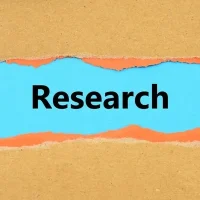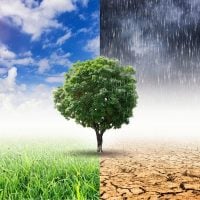The African Women’s Development Fund (AWDF) stands as a beacon of hope and empowerment for women across the African continent. Established in 2000, AWDF is a pan-African grant-making organization dedicated to supporting the initiatives of women’s rights organizations and movements. Its mission is to promote and enhance the capacity of women to achieve their rights and contribute to sustainable development.
By providing financial resources, technical support, and advocacy, AWDF plays a crucial role in addressing the systemic barriers that hinder women’s progress in various sectors, including health, education, and economic empowerment. AWDF recognizes that the challenges faced by women in Africa are multifaceted and deeply rooted in historical, cultural, and socio-economic contexts. Therefore, the fund not only focuses on immediate financial assistance but also emphasizes the importance of building a robust network of women’s organizations.
This network fosters collaboration, knowledge sharing, and collective action among women across different regions. By amplifying the voices of women and ensuring their participation in decision-making processes, AWDF aims to create a more equitable society where women can thrive and contribute meaningfully to their communities.
The Goals and Objectives of the Strategic Framework
The strategic framework of AWDF is designed to align with the broader goals of gender equality and women’s empowerment as outlined in various international agreements, such as the Sustainable Development Goals (SDGs). One of the primary objectives is to enhance women’s leadership and participation in governance at all levels. This involves not only increasing the number of women in political positions but also ensuring that their voices are heard in policy-making processes.
By fostering an environment where women can lead, AWDF aims to challenge patriarchal norms and promote gender-responsive policies that benefit all members of society. Another critical goal of the strategic framework is to improve women’s access to economic resources and opportunities. This includes supporting initiatives that provide women with skills training, access to credit, and market opportunities.
For instance, AWDF has funded programs that empower women entrepreneurs by providing them with the necessary tools to start and grow their businesses. By focusing on economic empowerment, AWDF seeks to break the cycle of poverty that disproportionately affects women and their families, ultimately contributing to broader economic development across the continent.
The Key Components of the Roadmap for Women’s Development
The roadmap for women’s development outlined by AWDF consists of several key components that are essential for achieving sustainable progress. One of these components is capacity building for women’s organizations. AWDF recognizes that many grassroots organizations lack the necessary skills and resources to effectively advocate for women’s rights.
Therefore, it invests in training programs that equip these organizations with knowledge in areas such as project management, fundraising, and advocacy strategies. By strengthening these organizations, AWDF ensures that they can operate more effectively and have a greater impact on their communities. Another vital component of the roadmap is the promotion of gender-sensitive policies and practices within institutions.
AWDF works closely with governments and other stakeholders to advocate for policies that address gender disparities in various sectors. For example, it has collaborated with local governments to develop gender-responsive budgeting processes that ensure resources are allocated equitably. This approach not only benefits women but also contributes to overall societal development by addressing the needs of marginalized groups.
By promoting gender-sensitive policies, AWDF aims to create an enabling environment where women’s rights are recognized and upheld.
Implementation Strategies and Mechanisms
To effectively implement its strategic framework, AWDF employs a variety of strategies and mechanisms that facilitate collaboration among stakeholders. One such strategy is the establishment of partnerships with local organizations, governments, and international agencies. These partnerships are crucial for leveraging resources and expertise to maximize impact.
For instance, AWDF has partnered with organizations like UN Women to implement programs aimed at combating gender-based violence. Through these collaborations, AWDF can tap into a wider network of resources and knowledge, enhancing its ability to address complex issues facing women. Additionally, AWDF utilizes a participatory approach in its implementation strategies.
This means actively involving women from diverse backgrounds in the planning and execution of programs. By engaging women in decision-making processes, AWDF ensures that initiatives are tailored to meet their specific needs and challenges. This approach not only empowers women but also fosters a sense of ownership over the programs being implemented.
For example, in a recent initiative aimed at improving access to education for girls in rural areas, AWDF involved local communities in identifying barriers to education and developing solutions that were culturally appropriate and sustainable.
Monitoring and Evaluation of Progress
Monitoring and evaluation (M&E) are integral components of AWDF’s approach to ensuring accountability and measuring impact. The organization employs a robust M&E framework that allows it to track progress against its strategic goals effectively. This framework includes both qualitative and quantitative indicators that assess various aspects of women’s empowerment, such as increased participation in leadership roles or improved access to economic resources.
By collecting data on these indicators, AWDF can identify areas of success as well as those requiring further attention. Moreover, AWDF emphasizes learning from its experiences through regular evaluations of its programs. These evaluations not only assess the effectiveness of specific initiatives but also provide valuable insights into best practices and lessons learned.
For instance, after evaluating a program aimed at reducing gender-based violence, AWDF was able to identify successful intervention strategies that could be replicated in other contexts. This commitment to continuous learning ensures that AWDF remains responsive to the evolving needs of women across Africa while enhancing its overall effectiveness.
Conclusion and Future Outlook
As we look towards the future, the African Women’s Development Fund remains steadfast in its commitment to advancing women’s rights and empowerment across the continent. The challenges facing women are significant; however, the resilience and determination demonstrated by women’s organizations provide hope for meaningful change. With ongoing support from partners and stakeholders, AWDF is poised to continue its vital work in promoting gender equality.
In conclusion, the future outlook for women’s development in Africa is promising yet requires sustained effort and collaboration. As AWDF continues to implement its strategic framework, it will focus on expanding its reach and impact by fostering innovative solutions to emerging challenges. By investing in women’s leadership, economic empowerment, and advocacy for gender-sensitive policies, AWDF aims to create a more equitable society where all women can thrive.
The journey towards gender equality is ongoing, but with collective action and commitment, a brighter future for African women is within reach.








































